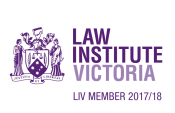.
This case study explores a recent employer sponsored visa case which we advised on. In times where either an employee or an employer is experiencing workplace bullying and feels trapped by the visa situation, we strongly suggest booking a consultation with a migration agent or immigration lawyer in order to find out what your rights are before it becomes too distressing.
The Situation
Recently, an upset and very stressed employer called us from a regional area in Australia. She had some questions regarding an employer sponsored visa and one of her employees. (For the purposes of this article, we’ll refer to her as Ivy.)
Ivy runs her own hairdressing salon where she employs several Subclass 457 and Subclass 482 visa holders. She does her utmost to reward her visa holders’ loyalty by nominating them for permanent residence, once they meet the criteria.
Ivy recently sponsored an overseas hairdresser (we’ll call him Mark) for a 457 visa. After two years (the requirements at that stage – it has now changed to 3 years for eligible Subclass 482 TSS Visa holders), she nominated him for a transitional Subclass 186 Employee Nominated Scheme (ENS) TRT Visa.
Almost as soon as Ivy had completed the employer sponsored visa (nomination and visa application) on behalf of Mark, the cracks began to appear. Mark began to bully Ivy and her other 457 visa holder employees, and suspicious things began happening giving her cause for concern:
- Ivy had a bonus scheme for her loyal clients. The most beneficial of these were free haircuts for her clients once they had purchased a certain amount of hairdressing services from the salon. Ivy became aware that Mark was crediting his clients with “free haircuts” – but was in fact charging them and pocketing the money. Of course he denied this, and it was very difficult for Ivy to prove.
- Mark began to demand “under the counter” cash payments for working what he claimed were additional hours – however, Ivy could never verify these. Her other visa holders in the business claimed that Mark never worked those extra hours.
- Mark also started to bully Ivy – threatening to leave the business and steal all her clients. Mark was very charming to her clients and was a good hairdresser notwithstanding his shady character. The salon’s clients loved him. Ivy was justly concerned that Mark would carry out his threat to the business.
It was at this point that Ivy contacted us to find out what she could do. She was at her wits end, and understandably, worried about her business. She was concerned about the bullying of her staff and herself and the disappearing money, as well as the demands for cash payments which she knew were a breach of the business sponsorship obligations.
Mark’s Subclass 457 Visa Obligations + Possible Options
Mark was bound by the conditions of his Subclass 457 Visa
As Mark was the holder of a Subclass 457 visa, he was legally bound to work for Ivy’s salon because of the conditions of his visa. Subclass 457 Visas come with Condition 8107, which amongst other things, mandates that the visa holder only works for the nominating employer (the new Subclass 482 visa has a virtually identical condition).
This meant that if Mark left the business in keeping with his threat to Ivy, she was obliged to notify the Department of Home Affairs (DHA) that he had terminated his employment with the business. Under these circumstances, Mark would have only 60 days to find a new employer to sponsor him, nominate him and “take over” his Subclass 457 Visa.
Mark was also forbidden to work with any other employer from the time he left Ivy’s business to the time a new nomination was approved with a new employer. Given that new nominations often take ages to be approved, this could have been problem for Mark logistically and financially. Further, Mark’s claims of being able to steal clients away from Ivy’s salon were untenable given the timelines involved with a new nomination.
Mark would need to spend three years with a new employer before being nominated for permanent residence, not two under the “old” Subclass 457 rules.
Mark didn’t much care for the rules and regulations as they applied to Subclass 457 Visa holders such as himself, and he told Ivy that he would find a new employer to take over his Subclass 457 Visa, and that he would ask that employer to nominate him for a permanent residence visa (just like Ivy had).
The problem was, at this stage the rules had changed and the new TSS Subclass 482 rules would apply to Mark going forward. He had less than one year left on his visa, and he was faced with only being able to apply for a TSS visa after the expiry of his current Subclass 457 visa. This meant that Mark would need to spend three years working with his new employer before the new employer could nominate him for permanent residence via the Temporary Residence Transition Stream (TRT).
Mark could apply for “Direct Entry” permanent residence, but he faced hurdles in doing so.
Mark could also have applied for Direct Entry (DE) permanent residence via a Regional Sponsored Migration Scheme, Subclass 187 visa, but there would be multiple hurdles for him to overcome there too.
Firstly, Direct Entry Permanent residence for the occupation of Hairdresser is now restricted to Subclass 187 Regional Sponsored Migration Scheme (RSMS) visas, since the TSS changes. It is no longer possible to be nominated as a Hairdresser for a Subclass 186 visa, because the occupation is now contained within the Short Term Skilled Occupation List (STSOL) and not the Medium to Long Term Skilled Shortage List (MLTSSL). Only occupations on the MLTSSL can be nominated for a Subclass 186 Visa.
Secondly, because Sam did not have an Australian qualification in hairdressing, he would have to undergo a Skills Assessment prior to lodging his Direct Entry Subclass 187 visa application (this alone can take up to 14 weeks and must be completed prior to the visa application).
Thirdly, any employer wanting nominate Sam for Direct Entry would have to obtain Regional Certified Body (RCB) approval before lodging a Subclass 187 Nomination. (This is not strictly true, but it is highly unlikely a Subclass 187 Nomination would be approved without RCB approval).
Mark told Ivy that he would “nominate himself” for a Subclass 482 or Subclass 187 Visa.
This is a nice plan in theory, but in reality the Department Of Home Affairs (DHA) does its best these days to refuse this type of application on the basis that it considers such applications are only made to secure a “migration outcome” – ie a person will only nominate themselves to get a visa to stay in Australia, not because there is a genuine need for there position or the occupation. If the DHA finds there is a “relationship” or connection between the nominated employee and the business – eg the nominee is also the director or owner of the business (or a relative of the owner), it will inevitably refuse the application.
In our view, Mark would not be successful in nominating himself – and besides, once he left Ivy’s employment, he would be unable to work in any other business (including his own) until he had secured a new approved nomination for either a new Subclass 482 Visa or a Subclass 187 Visa AND the nomination had been approved. An external employer sponsored visa was his only option.
Ivy’s Best Option As An Employer
Ivy ultimately decided to withdraw Mark’s Subclass 186 nomination and terminated his employment.
Ivy reached the stage where Mark’s employment in the business was no longer tenable. She was stressed and uncomfortable and unable to ascertain how much money was disappearing from the business. Ivy made the difficult decision to formally terminate Mark’s employment and withdrew his Subclass 186 visa nomination. In keeping with her Sponsorship obligations, she duly notified the DHA of Mark’s termination (this must be done within 28 days of the employee’s departure), and withdrew the Subclass 186 nomination formally in writing.
Because of this, Mark’s Subclass 186 visa application was non-viable, and he needed to withdraw the visa application or have the visa refused.
Where did all this leave Mark and his employer sponsored visa?
- Once Ivy terminated Mark’s employment, Mark had 60 days to find a new employer to take over his Subclass 457 visa, but he was unable to work for a new employer until the new nomination was approved.
- Any new employer similarly, was unable to employ Mark until the employer nomination was lodged and approved.
- If Mark was fortunate enough to secure a new Subclass 457/482 nomination, he would need to wait three years before his new employer was able to nominate him for permanent residence via the Subclass 187 RSMS scheme.
- If this pathway was viable and Mark was fortunate enough to be granted a Subclass 187 Visa, he would be obliged by law to remain with the nominating employer at least two years, or risk having his visa cancelled.
Conclusion
Mark’s dishonesty, bad dealings and threats to his employer and fellow staff ultimately backfired, as he gave no thought to Ivy’s ability as his nominating employer to control his immigration destiny.
He believed he could manipulate Ivy and her staff through threats of stealing clients and financially ruining her.
Ultimately made his pathway to Permanent Residence much more difficult, if not impossible. We wish him luck.

 Points Test
Points Test
 Book Now
Book Now 


